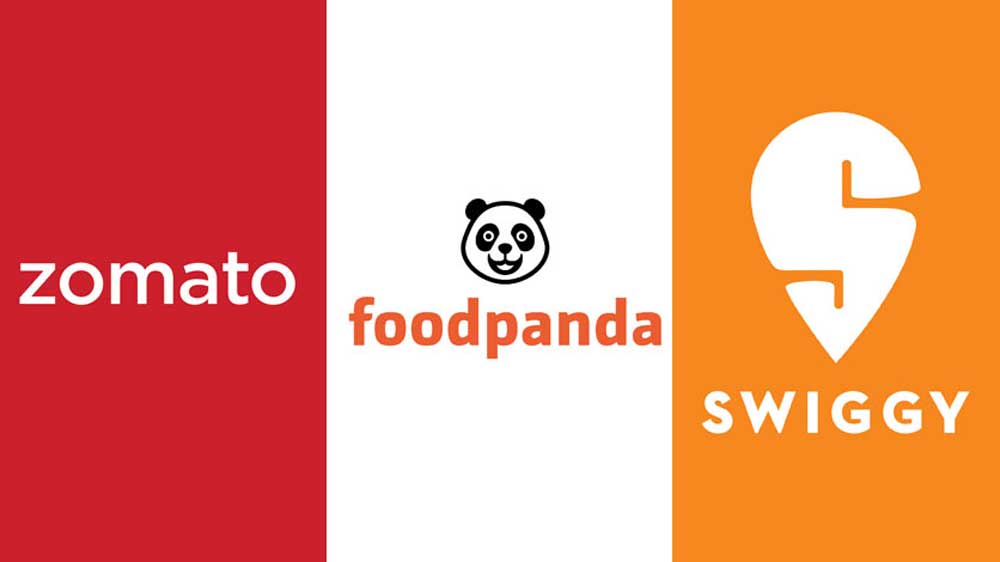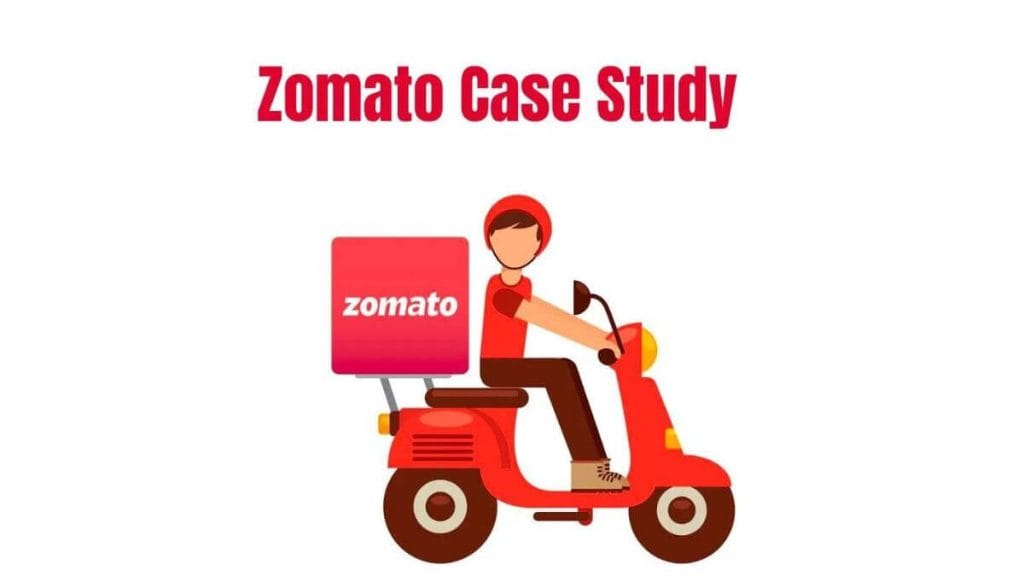Zomato case study, Zomato is an Indian multinational restaurant aggregator and food delivery company. Founded by Deepinder Goyal and Pankaj Chaddah in 2008, Zomato has grown to become a leading player in the food industry, providing a variety of services to its users.
Introduction to Zomato case study
Origin and Evolution
Originally named FoodieBay, the company started as a restaurant listing and recommendation portal. The founders renamed the company to Zomato in 2010 to avoid a potential naming conflict with eBay. Over the years, Zomato has expanded its services and now operates in more than 1,000 Indian cities and towns.
Zomato’s Business Model
Zomato’s business model is based on providing a comprehensive and convenient online platform for users to search for restaurants, view menus, read reviews, and make reservations. The company earns revenue through advertising and subscription fees from restaurants. Zomato has a two-sided platform that connects restaurants with customers. Restaurants can list their menus and prices on the platform, and customers can use the platform to discover new restaurants, read reviews, and place orders. When customers place orders through the platform, Zomato takes a commission on the sale. Zomato case study, also generates revenue through advertising. Restaurants can pay to have their listings promoted on the platform, which can help them reach more customers.
Key Services Offered by Zomato
Zomato offers a wide range of services to its users and restaurant partners3. Here are some of the key services:
- Restaurant Discovery: Zomato provides information, menus, and user reviews of restaurants. Users can discover new restaurants based on their location, cuisine, and price point.
- Food Delivery: Zomato offers food delivery options from partner restaurants. This platform empowers individuals to get food from local eateries and restaurants delivered to their doorstep for a small fee.
- Table Reservation: Users can reserve tables at restaurants through Zomato. This service allows users to avoid waiting times and enjoy a seamless dining experience.
- Zomato Gold: Zomato Gold is a subscription service that offers users discounts on food and drinks at participating restaurants.
- Event Management and Advertising for Restaurants: For restaurant owners, Zomato provides various valuable services like event management, targeted advertising, online presence management, performance tracker, and customer service.
Global Expansion
Zomato has expanded its operations internationally in several countries, including the United Arab Emirates, Sri Lanka, Qatar, the United Kingdom, the Philippines, and South Africa. In 2015, Zomato acquired Seattle-based restaurant discovery portal Urbanspoon, which led to the firm’s entry into the United States and Australia.
Zomato’s Growth Strategy
Expansion into New Markets
Zomato has been focusing on expanding its reach in India and other emerging markets. The company is entering into new markets – Tier-II and Tier-III cities. Zomato’s expansion into the Direct-to-Consumer (D2C) space through its 10-minute delivery platform, Blinkit, places it in direct competition with established e-commerce giants like Amazon and Flipkart. This move signals a strategic shift in the company’s business model.
However, Zomato’s international expansion has been selective. The company has pulled the plug on most of its international businesses and does not see global expansion as part of its future roadmap.
Diversification of Services
Zomato’s diversification plan is to double down on the food business — from supplying clean ingredients to restaurants to delivering food to customers and beyond. The company believes its ability to cross-sell its several offerings to a customer brings a high chance of success at capturing them at any point of the food chain.
Zomato offers a wide range of services, including online ordering, table reservations, and reviews of restaurants. It also enables services such as Zomato Whitelabel under which they give offers to the restaurants to develop a customized food delivery app. It also works with cloud kitchens and restaurants for consultancy services.
Partnerships and Acquisitions
Zomato has made 15 acquisitions across sectors such as Food Tech, Food Tech – India, Enterprise Tech – India, and others. The company’s largest acquisition to date was in 2022 when it acquired Blinkit for $568M. Zomato’s acquisitions have been strategic, helping it expand its services and reach.
Zomato has also made minority acquisitions in start-ups like Grofers, Curefit, Shiprocket, and Magicpin, with the idea to eventually acquire majority stakes and amalgamate the acquired companies into its operations.
Also read | Unveiling the Success Story of WhatsApp: Case Study
Technology and Innovation at Zomato

Zomato’s App Features
Zomato’s app is designed to provide a seamless experience for its users. Here are some of its key features:
- User Profiles: Personalized user accounts for seamless order tracking and history.
- Search and Filters: Advanced search options and filters for cuisine, location, and price range.
- Reviews and Ratings: User-generated reviews and ratings to aid decision-making.
- Table Booking: Users can reserve tables at restaurants through the app.
Data Analytics and Personalization
Zomato uses data analytics to tailor its platform to individual users’ preferences, ensuring a personalized experience for each customer. The company uses predictive analysis on its data to answer basic questions, enrich the customer experience, reduce costs, and increase revenue. For example, Zomato uses machine learning to improve the Order Through Rate (OTR), Gross Merchandising Value (GMV), and Average Order Value (AOV), and reduce Estimated Delivery Time (EDT).
Integration of AI and Machine Learning
Zomato has embarked on a path of generative AI integration. The company aims to revolutionize the consumer experience through innovative AI-based solutions. The integration of generative AI promises to enhance Zomato’s operational efficiency and streamline customer interactions.
Zomato has appointed a dedicated Head of AI Product Development to drive these efforts. The team is looking to integrate AI into various customer interfacing features such as search and notifications, in addition to backend tools such as product photography and customer support.
Zomato case studyhas also leveraged machine learning to optimize supply-chain costs and expedite delivery times. For example, Zomato has tuned neural networks that predict food preparation and delivery time.
Competitive Landscape: Zomato case study

Competitors in the Food-Tech Industry
Zomato faces stiff competition from several players in the food-tech industry. Some of its top competitors include:
- Swiggy: A prominent online food delivery platform predominately operating in India.
- Uber Eats: An international food delivery service established by Uber.
- Delivery Hero: An online food delivery service operating globally.
- Dunzo: An Indian delivery service that operates in several Indian cities.
- FreshMenu: An online food delivery platform that prepares and delivers meals from its kitchens.
Market Positioning and Branding
Zomato has positioned itself as a user-friendly platform that provides a comprehensive and convenient online platform for users to search for restaurants, view menus, read reviews, and make reservations. The company’s branding strategy is based on three things: differentiated food offerings, customer experience, and social media management.
Zomato case study differentiates itself by offering rare dishes that are not available anywhere else. It has localized its menu into ten languages, including Chinese, Japanese, French, etc. Zomato delivers food to customers at home or office through its food delivery service. Zomato provides a Gold membership for Rs 299 per year to its regular customers by giving them special offers and discounts over restaurants listed on the Zomato website.
Response to Competitive Challenges
To generate profits amidst growing competition, Zomato’s CEO, Deepinder Goyal, employed a three-fold strategy of reducing manpower, closing its cashless businesses in a few markets, and dividing the company’s markets into two types, with different strategies to be applied in each.
Zomato has also responded to competitive challenges by launching new services and making strategic acquisitions. For instance, Zomato launched a subscription-based program called Zomato Treats and a premium membership program called Zomato Gold9. In 2022, Zomato acquired Blinkit, a quick commerce app, with a vision to enter the quick commerce space dominated by Swiggy Instamart & Zepto.
Zomato’s Impact on the Food Industry
Changing Consumer Behavior
Zomato has played a pivotal role in transforming how consumers interact with the food industry. By integrating different restaurants and allowing customers to select restaurants, leave reviews, and check listings according to their choice of food, Zomato has changed the food business sector. It offers analytical information for numerous eateries in 24 countries around the world. This has led to a shift in consumer behavior, with more people opting for the convenience of online food ordering and delivery.
Influence on Restaurant Operations
Zomato has significantly influenced restaurant operations. By providing a platform for restaurants to list their menus and prices, Zomato has helped restaurants reach a wider audience. It offers analytical information that can help improve the business of eateries. Restaurants can leverage this platform to view demand and supply gaps, price distribution, and demand trends for different dishes or cuisines. This data-driven approach has helped restaurants make informed decisions on prices, dishes, locations, etc.
Socio-Economic Impact
Zomato’s operations have had a considerable socio-economic impact. By creating a platform that connects restaurants, delivery partners, and customers, Zomato has generated numerous employment opportunities. However, it’s worth noting that the income of food delivery platform workers saw an 11% decline in their average monthly real income between 2019 and 2022 due to inflation and rising fuel costs.
Moreover, Zomato’s operations during the COVID-19 pandemic had a significant impact. The implementation of lockdowns resulted in badly affecting tourism, transport, the economy, and the hotel industry. Zomato, by providing a platform for online food delivery, helped many restaurants stay afloat during these challenging times.
Challenges and Future Outlook for Zomato Case Study
Regulatory Challenges
Zomato operates in multiple countries, which can create additional regulatory and compliance challenges. The company has to navigate local laws and regulations around food safety, data privacy, and labor practices. Recently, Zomato case study faced regulatory scrutiny when it sought approval to acquire an over 9 percent stake in e-grocery platform Grofers. Moreover, Zomato and other food delivery platforms have been served GST notices, raising questions about the tax implications of their business models.
Sustainability and Growth Plans
Zomato has outlined ambitious sustainability goals for 2030. The company aims for 100% deliveries through electric vehicles (EVs) by 2030. This strategic move is projected to achieve net zero emissions across the entire food ordering and delivery value chain by 2033.
Zomato also plans to support the growth of 300,000 micro, small, and medium-sized restaurant businesses and food entrepreneurs by 2030. Furthermore, the company aims to enhance the earning and saving capacity of one million gig workers through upskilling programs, benefit initiatives, and strategic partnerships.
Future Opportunities and Threats
Zomato’s future is filled with both opportunities and threats. On the opportunities side, Zomato can expand into new markets, focus on sustainability, diversify its services, and form partnerships with restaurants and other businesses.
However, Zomato also faces several threats. Intense competition from other food delivery apps such as Swiggy, Uber Eats, and GrubHub is a significant challenge. Changing consumer preferences and geopolitical risks are other potential threats. Moreover, Zomato’s shares are seen as overpriced even at its current level, and the cash-burn-reliant Blinkit deal is widely expected to widen the loss of Zomato in the near term.
Lessons from Zomato’s Success

Identifying a Problem and Providing a Solution
Zomato’s journey began when its founders, Deepinder Goyal and Pankaj Chaddah, identified a problem – the cumbersome process of ordering food. They realized that they could solve this problem by creating a simple online food ordering website. This highlights the importance of identifying a problem and providing a solution that meets the needs of the target audience.
Persistence and Adaptability
Zomato’s initial venture failed, but the founders did not give up. They learned from their mistakes and adapted their strategy, which eventually led to the creation of Zomato. This underscores the importance of persistence and adaptability in the face of challenges.
User-Centric Approach
Zomato case study can be attributed to its user-centric approach. The company has made significant investments in delivering a smooth user experience. Their app and website were created to give consumers simple access to a variety of restaurants and cuisines, as well as the ability to place meal orders for delivery. This demonstrates the importance of focusing on the user experience and continuously improving it based on user feedback.
Leveraging Data and Technology
Zomato has leveraged data and technology to enhance its services. The company uses predictive analysis on its data to enrich the customer experience, reduce costs, and increase revenue. For example, Zomato uses machine learning to improve the Order Through Rate (OTR), Gross Merchandising Value (GMV), and Average Order Value (AOV), and reduce Estimated Delivery Time (EDT). This shows the power of leveraging data and technology to drive business growth.
Effective Content Distribution
Zomato’s promotion strategy is not just about creating unique and trending content, but also about effective content distribution. The company understands that content distribution is as important as creating personalized and interesting content. This highlights the importance of having a well-planned content distribution strategy.
Conclusion: Zomato case study
Zomato’s success story offers valuable lessons on problem-solving, persistence, user-centricity, leveraging data and technology, and effective content distribution. These lessons can serve as a guide for entrepreneurs and businesses aiming to achieve success in their respective fields.

